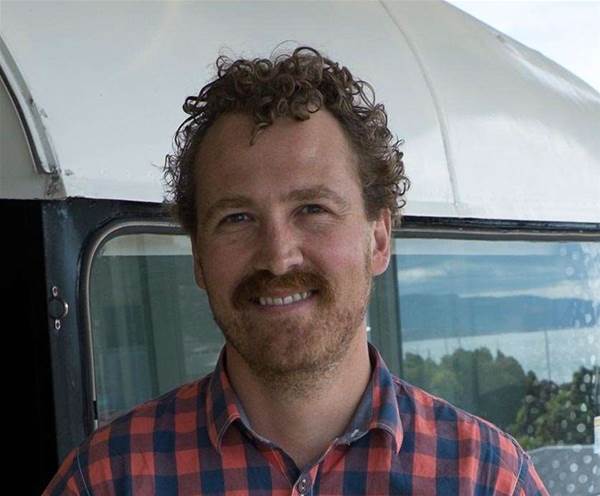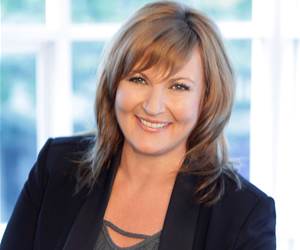Going all in with Spotify-style agile
Trent Mankelow - Trade Me Group

Trent Mankelow is watching as NZ online trader Trade Me transforms itself into dozens of tribes, 33 squads, and more than 400 free-thinking innovators.
Trade Me was so impressed with Spotify’s agile operating model it decided to import the blueprint to the land of Kiwis and pineapple lumps.
Faced with plateauing financial fortunes, the company radically overhauled its nearly 200-person tech workforce based on the music streaming juggernaut’s own unique take on the agile development framework.
Just 18 months ago, the Trade Me Group relied on one central IT team that supported business units in Wellington, Auckland and Christchurch and delivered services from vehicle sales to online dating.
It was an approach that created support bottlenecks and resource tension between the different services and their individual profit and loss targets.
The structure simply wasn’t working.
Enter Spotify.
The business' initial success saw it double its staffing levels every year between 2006 and 2013. Spotify was a scrum-based organisation at the beginning, working in capped groups towards time-boxed delivery goals.
But its rapid growth and geographic dispersal forced it to shape the scrum model into a new flavour that could work at scale.
The Spotify blueprint emphasised autonomy, and it transformed scrums into squads with the power to decide who would be a member and how they would tackle the problem at hand.
But the model got too big - it counted 50 squads in four cities as of March last year - so Spotify added tribes, chapters and guilds to its organisational vernacular.
Tribes are lightweight groupings of several squads. Chapters are horizontal groupings of similar functions between squads. Guilds are informal communities of interest that emerge between the different groups.
Trade Me’s IT workforce knows a thing or two about growth.
As of February the business employed 424 staff, up 69 people in just six months. The tech wing, however, grew even faster, expanding by 55 workers to become a formidable team of 189.
Mankelow, a one-time Unisys software engineer with a background in UX and startups, was one of the new hires, brought on board nine months ago to become chief product officer.
He told iTnews the company now has 33 squads based across its three NZ sites.
“It was a conscious decision to borrow from the Spotify model,” he said. “It seems to have worked pretty well for us.”
In keeping with the ‘rules are made to be broken’ sentiment of the Spotify model, Mankelow said Trade Me had tweaked the blueprint to fit the Kiwi’s context, but continues to push autonomy as a core motivating principle.
“When you read the research around workplace motivation it makes a lot of sense that you would give the teams a lot more autonomy as long as the work is getting done.”
He said each squad is allowed to “pick their flavour of agile” - be it kanban or scrum or whatever - and elect the squad they want to be in.
“When we started the squadification it was pretty nerve racking," Mankelow said.
“For example we formed a code health team, which is people who do maintenance on the code base, and they were a bit worried that no one was going to choose to join them.
“But as it turned out is was the complete opposite and that was one of the teams that was oversubscribed."
Despite the “dungeons and dragons” style taxonomy, he said the business was embracing the restructure with both arms.
“Every now and again I hear people talking about the bad old days of projects that took a year and a half to get out, then were finished in one big go, before falling over and ending up in a war room.
“I don't think anyone wants to go back to how it was.”
Read on to find out how Trade Me plans to keep Tinder, ASOS and Facebook at bay...
It is no accident Trade Me Group is taking radical action to boost innovation internally: it has found itself in an odd and unfamiliar situation.
For 15 years, the site grew accustomed to being a disruptor - one of the online classifieds success stories that took down the Goliath newspaper.
But Mankelow is frank about the current situation and admits there are big and fierce players on the scene with scale and international pricing working in their favour, while the traditional bricks and mortar retailers heave themselves into the online trading space.
The company is feeling the heat in its Marketplace, the front page of the site that deals with buying and selling general items. Revenue through this major segment was down 1.5 percent in the last half-year.
“When you look at the overall growth in ecommerce, the growth of our marketplace business isn’t really keeping up with that. It is a really interesting position to be in after a decade and a half of being at the forefront of of that disruption,” Mankelow said.
“We have found that a lot of organisations have really stepped up their game, whether or not that is an ASOS with free shipping around the world, or Amazon which continues with innovation, or even locally Briscoes or Rebel Sport and all the major New Zealand retailers that have really lifted their game.”
Trade Me Group is more than New Zealand’s answer to eBay, however. There is no area of online trading it isn’t into. Mankelow describes the business as “kind of a combination of eBay combined with Carsales.com, combined with REA. It’s like everything mashed together.”
This means Mankelow’s team have more urgent fish to fry than the global auction giant. Trade Me holds 90 percent of the used goods market in New Zealand, where eBay never really gained traction. He is looking further afield for the next competitive threat.
“We have competitors in all different pockets. It means we can’t be complacent,” he said.
“We actually decided that Facebook groups would be an interesting comparison. They are gradually making it easier and easier for people to buy and sell on Facebook.”
One of these new fish is Tinder, which has taken a huge chunk out of the sleepy match-maker market that includes Trade Me business FindSomeone.
Mankelow said the only thing more amazing than Tinder’s decimation of sites like match.com, Okay Cupid and eHarmony was the speed at which it has happened.
“Tinder basically knocked them all off the top. These guys were cruising along thinking that things were going well and then 200 days later they were in freefall decline.”
Investing in renewal
“It’s no secret that we’re in the throes of an accelerated period of re-investment,” Trade Me chairman David Kirk told shareholders in February.
The business is not planning to sit around as its model is swept out from underneath it, so is planning an aggressive period of acquisition, continuing a year that saw it buy a stake in peer-to-peer lender Harmoney, online payments gateway Paystation, and real estate inspection management application Viewing Tracker.
For his part, Mankelow is rebuilding the website to proper leverage the “mountains of data” the group is sitting on, and the company is in the final stages of recruiting a head of analytics.
“We are really trying to get our act together around the data side of our business," he said.
“Not many businesses are looking at life in the way we are. We know what kind of jobs you look for, what kind of vehicles you buy and what kind of property you are interested in, as well as what new and used goods you buy and sell.
“Our desire is to offer experiences that are much more personalised so that your home page is different to mine, and the EDMs you get are different to mine, and they are targeted and useful.
“We are doing a lot of stuff at the moment with Google tag manager which is a generic way of capturing how people are interacting with the website and the apps we have.
“It is pretty basic stuff but we still have a way to go.”
He is quick to add that he plans to very much honour the trust customers have in the brand.
“We are very careful with privacy and how we approach this kind of stuff and this is perhaps part of the reason we have been a bit tentative around this.”


